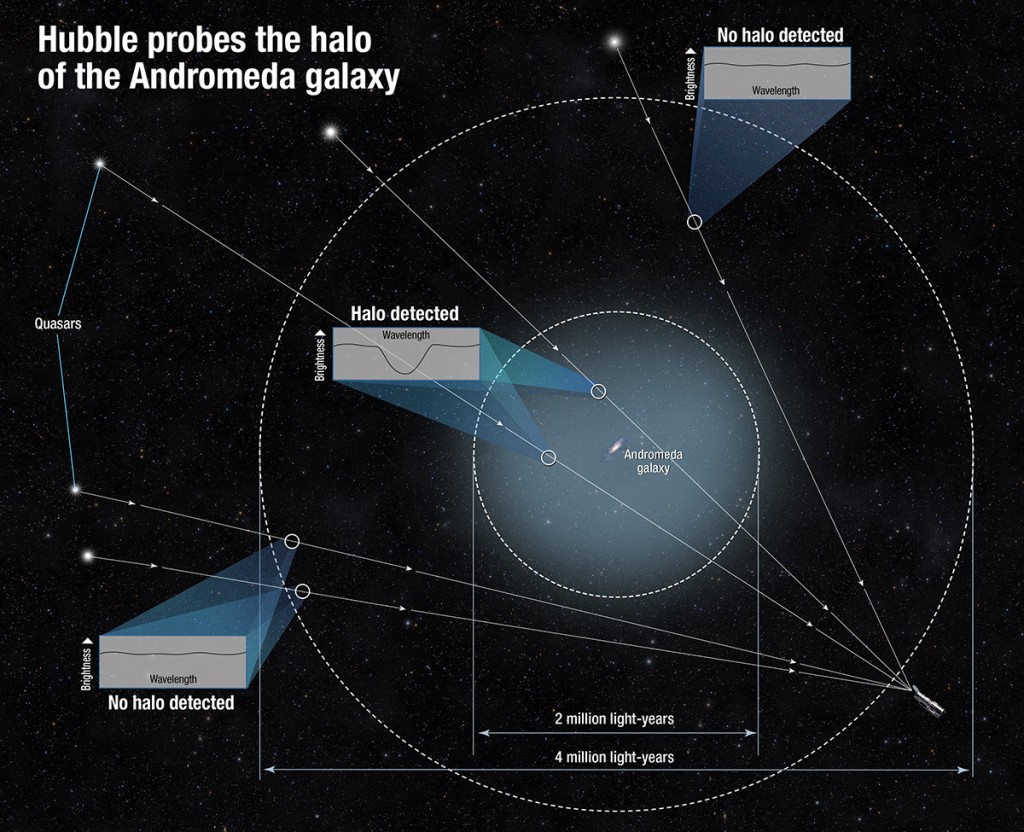University of Notre Dame/Indiana – A new study has found that the halo of hot plasma that was the Andromeda Galaxy or the Messier 31, is surrounded by has become six times larger and 1,000 times bigger than before. The researchers have noted the changes by conducting a Cosmic Origins Spectrograph (COS) on the NASA/ESA […]
University of Notre Dame/Indiana – A new study has found that the halo of hot plasma that was the Andromeda Galaxy or the Messier 31, is surrounded by has become six times larger and 1,000 times bigger than before. The researchers have noted the changes by conducting a Cosmic Origins Spectrograph (COS) on the NASA/ESA Hubble Space Telescope.
According to Dr Nicolas Lehner from the University of Notre Dame, Indiana and leader of the current study, the galaxies consist of atmosphere known as halos and these gaseous surroundings that are responsible for controlling the formation of the stars in the galaxy. For the study, Dr Lehner worked with his colleagues Dr Christopher Howk from the University of Notre Dame and Dr Bart Wakker, University of Wisconsin-Madison.
Analysis Of 18 Quasars
They analyzed 18 quasars that were situated at the rear of the Andromeda Galaxy for understanding the distribution of material in and around the galaxy. They found that when the light of the quasars traveled through the halo, some of the light was absorbed by the plasma and this made the quasar darker.
The scientists measured the light variations at the specific ranges where the quasar became darker, to determine the volume of the gas and this helped them in defining the enlargening size of the halo. Dr Lehner said that this was a new breakthrough where the researchers used a large number of quasars to find the true dimensions of the halo of a galaxy as big as the Milky Way.
Co-author of the study, Christopher Howk said that just by measuring the change in brightness, it was easy to detect the volume of the gas from the Andromeda Galaxy and the Milky Way.
Milky Way, Andromeda to Merge
Past studies on 44 different galaxies have found halos but this is the first time when such a large halo has been determined for a galaxy that is about 2.5 million light years away from our galaxy. The researchers have also predicted that the halos of the Milky Way and Andromeda may merge before the galaxies collide with each other and form one massive galaxy in about 4 billion years.



Leave a Reply